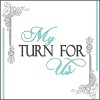Today, I'm going to give you tips on how to take great black and whites.
TIP 1: Shooting black and white shots is different than shooting in color.
Can't you just convert a color photo to black and white?
Sometimes, yes. But not always.
Let's get started.
Here's an example of simply converting a color shot to B&W.
 |
| Mary Denman Photography |
Pic. 1: I shot the original picture in color.
Pic. 2: Then, I converted the shot to black and white.
Pic. 3: Then, I added more contrast post processing.
What can we learn?
Pic 1: In the color photo, the reds, greens, browns and gray fog create depth in the picture. It provides visual interest. The values are very similar, but the colors separate the plants, leaves, trees and fog from each other.
Pic. 2: When I simply converted it to B&W, notice how the picture becomes dull and much less interesting. The shot becomes more monochromatic. Look at the bottom right corner in particular. The reds, greens and browns are about the same value of intensity so when I converted to B&W, they just become a gray mass. Depth is washed away.
Pic. 3: I added a lot more contrast to the B&W on the right. By adding contrast, making the whites lighter and the grays darker, it adds depth back in. Individual plants stand out again, creating depth. But this doesn't make pic 3 a great shot.
Even though adding more contrast to a B&W can add more depth, you need to understand how light affects B&W photography. Which brings us to the next tip.
TIP 2: High contrast between the dark and light parts of a photo make for good B&W shots.
How do you get higher contrast? By using bright light against a darker background.
 |
| Mary Denman Photography |
Pic. 1: Original, shot in color.
Pic. 2: Converted to B&W with no need to add contrast. The photo has enough of its own.
Pic. 3: Photo converted to sepia. Notice the brown undertones instead of gray. I just wanted to try the old, sepia look.
What can we learn?
Taking pictures in bright light with dark surroundings, or vice versa, naturally lend themselves to the conversion of becoming B&W.
Here is another example of high contrast in the color photo that leads to a really striking B&W. Again, I converted this one to B&W just using the click of a button. I didn't have to balance it or add contrast.
 |
| Mary Denman Photography |
Now, on to people.
TIP 3: When you want to get good B&W people shots, keep the background simple so your subjects stand out the most.
In the next two sets of pictures, notice that the background is simple. Then, when I converted them to B&W, my subjects really stood out.
 |
| Mary Denman Photography |
Isn't the bride just glowing?
 |
| Mary Denman Photography |
 |
| Camouflaged son... |
So what's up with this next photo?
Well, when I took it at first, I didn't think about the high contrast of the sun and the shadows of the leaves. So when I looked at it on the computer, I laughed. My son just about disappeared. It was busy and cluttered with all the shadows. Then, for fun, I converted it to B&W. He seems to disappear into the tree behind him. Then add his expression and I knew I had a winner! I smile every time I look at it.
It may not follow my tips exactly, but it's an interesting study in contrast!
Summary of the tips:
1: You have to have enough contrast in a color picture to convert it easily to a B&W that looks good.
2: Bright sunlight reflecting off of a subject can make for a great B&W.
3: Be aware of keeping the background simple for B&W.
These are just some good starting tips for B&W shots and should help improve your photos quickly.
For BLOGGERS: As you saw in the shots of the woods, the color picture tells more of a story than the middle B&W. How does this apply to blogging? Bring depth to your posts with great information to give to your readers. Color the post with descriptions that move your followers. Shine the light on and highlight a main point. Trying to cover too many points washes away the depth, creating monochromatic soundbites.
Hope these tips help!
Keep on clicking!
Mary
TWEETABLE:
How to Take Great Black and White Shots (click to tweet)
BLOGS I JOIN FOR THE WEEKEND:














Thanks for the tips! I have tried just converting colored photos to B&W and they don't come out well, now I know why. visiting from Photo Friday.
ReplyDeleteYou're so welcome Audrey! Let me know if you have any questions!
DeleteLove your tips Mary, and thank you for sharing on the #OMHGFF this week!!
ReplyDeleteHope you have a great weekend!
I hope they really help Karren! Thanks for all you do!
DeleteGreat advice and well organized for a clear presentation! I would imagine you have more time to sit and write while your foot/leg heals. I hope you are getting enough help around the house and in the kitchen. By the way, I featured you on my weekend linky party. God bless!
ReplyDeleteI haven't had a lot of time to write yet. The surgery was pretty painful, so I'm still sleeping a lot. But I hope to use the down time to write soon! :)
DeleteThanks for the mention!
Great tips Mary, lovely pictures :) I hope you foot is healing ok?
ReplyDeleteI think it is so far. I have to be in this cast for 2 weeks, then go back to the surgeon and hopefully get the stitches removed and into a boot for the next several weeks.
DeleteLooking forward to seeing your spring pictures since I won't be out this spring. :)
Thanks so much for some great tips. I'm rubbish at photography but being a blogger I need to get better. I'm going to be keeping your post in mind for my future photos. :)
ReplyDelete#weekendbloghop
Love the picture of your camouflaged son, Mary :)
ReplyDeleteI hope your foot is healing and feeling a lot better.
Great tutorial, Mary. Glad you shared these with us at http://image-in-ing.blogspot.com/2016/03/spring-has-finally-sprung.html
ReplyDeleteAwesome! These tips are so practical and easy to understand that even I can use them! Thank you!
ReplyDeleteWow these are awesome tips. I am a budding photographer and soak all advice in with pleasure
ReplyDeleteI love a black and white portrait - always hides the wobbly and not so nice bits! Love your easy tips x
ReplyDelete